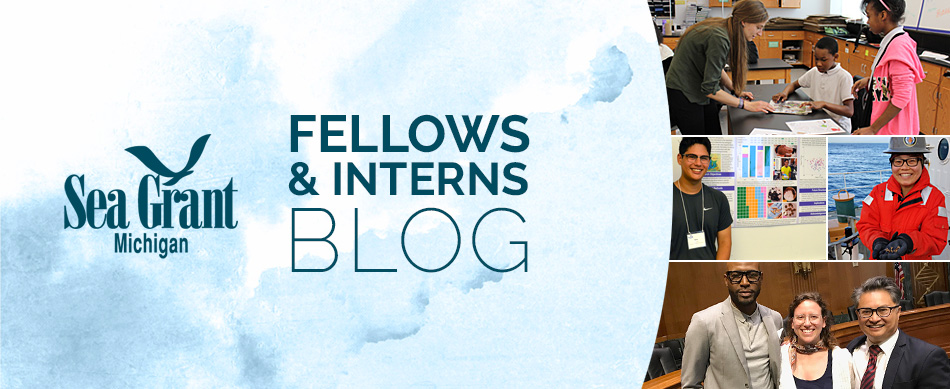I’m almost through the fourth month of my Knauss Fellowship
working for NOAA’s Restoration Center (RC) in Silver Spring, Maryland. The RC invests funding and technical
expertise in habitat restoration projects throughout the country. I have a fisheries management background but was
drawn to the RC because the program produces tangible results, improving our
coastal, marine, and Great Lakes habitats.
Much of my work focuses on Great Lakes habitat
restoration issues. It may seem daunting
to try and restore the Great Lakes given all of the problems Great Lakes
ecosystems face, but the RC and their partners (e.g., non-profits, state and
local agencies) are making great progress to remove fish passage barriers, construct
in-stream fish habitat, and stabilize stream banks and coastlines. In addition to my Great Lakes
responsibilities, my role in the RC has recently expanded to include some time
supporting the Community-based Restoration Program (CRP). The CRP implements habitat restoration
projects nationwide but much of my time has been spent working on salmon and
trout issues in the Pacific Northwest, California, and Alaska. The work is bringing me back to where I grew
up and where I first got my feet wet working in the natural resources. Throughout my time, I’ve gained a lot of
insight into the federal grants process and also a great deal of experience
working with our project partners.
I’ve also been spending a bit of time learning a
software package called IMPLAN. Ever
hear a politician say something like “this will create X number of jobs and
have X impact on the local economy?”
Often times, those numbers come from analysis using IMPLAN. We will be using the software to quantify the
economic benefits of NOAA funded habitat restoration projects in the Great
Lakes and across the country. This type
of information helps a lot when we are trying to justify funding for future
restoration work whether we’re talking to NOAA leadership, Congress, or the public. This is definitely one of those things I
never thought I would be doing when I went to grad school for a degree in
Fisheries and Wildlife, but it’s a good tool going forward.
 Now on to one of the best perks of the Knauss
fellowship - the travel budget. The
month of May started with a trip to Ohio to visit some Great Lakes Restoration Initiative
habitat restoration sites and meet with some of our project partners. I then spent one night back in DC and it was
off to Scotland! I attended and
presented my Master’s research at the World Fisheries Congress in
Edinburgh. This was something I had been
looking forward to for some time and the Knauss fellowship made it happen. The conference was a great experience and
broadened my perspective on fisheries management and policy. In addition to the conference I was also able
to stand on the 18th hole bridge at St. Andrews, try much of the
local food and drink, hang out with some Scottish Highland cattle, and visit
with the chief of the MacMillan clan! That last one probably would not be too
interesting to most but I was pretty excited about it.
Now on to one of the best perks of the Knauss
fellowship - the travel budget. The
month of May started with a trip to Ohio to visit some Great Lakes Restoration Initiative
habitat restoration sites and meet with some of our project partners. I then spent one night back in DC and it was
off to Scotland! I attended and
presented my Master’s research at the World Fisheries Congress in
Edinburgh. This was something I had been
looking forward to for some time and the Knauss fellowship made it happen. The conference was a great experience and
broadened my perspective on fisheries management and policy. In addition to the conference I was also able
to stand on the 18th hole bridge at St. Andrews, try much of the
local food and drink, hang out with some Scottish Highland cattle, and visit
with the chief of the MacMillan clan! That last one probably would not be too
interesting to most but I was pretty excited about it.
I’m now settling back into things here in Silver
Spring and I’m excited to see what lies ahead.
More to come later on.
Eric MacMillan
2012 Knauss Fellow



